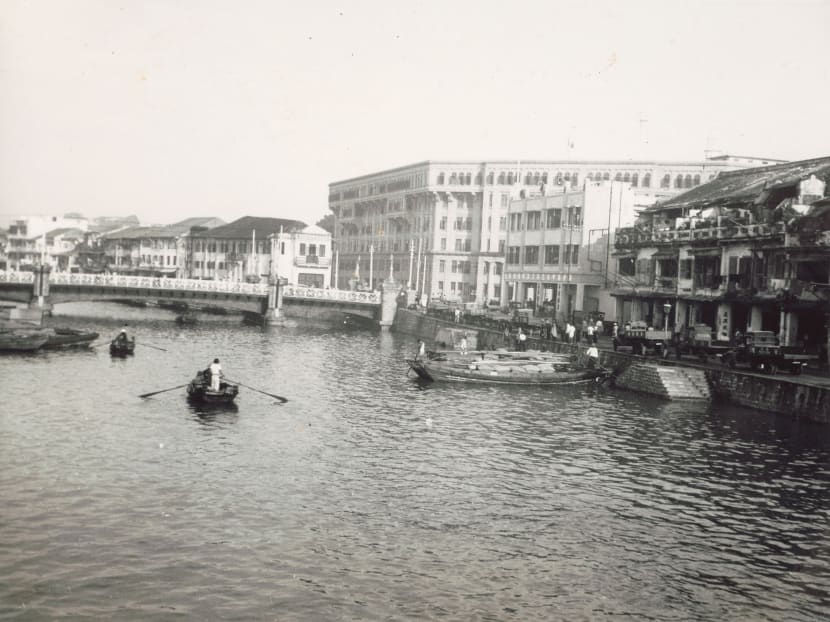National Day Special: Longing for the good old days
SINGAPORE — Three months ago, behind closed doors, participants at an Institute of Policy Studies (IPS) event had a discussion with members of the Government’s much-vaunted machinery to anticipate wild cards and black swans — the latter a buzz phrase among civil servants these days, referring to unpredictable and rare occurrences that nevertheless have great impact.


SINGAPORE — Three months ago, behind closed doors, participants at an Institute of Policy Studies (IPS) event had a discussion with members of the Government’s much-vaunted machinery to anticipate wild cards and black swans — the latter a buzz phrase among civil servants these days, referring to unpredictable and rare occurrences that nevertheless have great impact.
On the agenda were sousveillance — or the watching of the Government by the general population — and the impact of automation on jobs. But the group was also trying to dissect and make sense of another trend: A longing for the good old days.
“The sense of nostalgia among Singaporeans seems to have become more pervasive ... Singaporeans are finding new ways to build the community ties that characterised kampung life and mobilising to preserve green spaces and heritage buildings that provide a link to the past,” read the synopsis for the IPS session, organised for its corporate associates and featuring some members of the Government’s Strategic Futures Network.
The network was set up in 2009 and is made up of Deputy Secretaries from each ministry. The participants at the IPS session were warned of the “ugly side” of nostalgia — such as rejecting the growth of the country into a global city and cultivating an “insular sense of nationalism” — and asked to look at ways to channel the sentiment towards a more forward-looking direction.
The nostalgia bug has certainly sunk its teeth into the Singaporean psyche. From the uproar that erupted in 2011 over the redevelopment of Bukit Brown — a tract of land that had been largely ignored by officialdom and the general public for years until then — and the enthusiastic response to government-led efforts to remember the past and honour pioneers, to the mushrooming of blogs and ground-up efforts to preserve or simply reminisce about places and a bygone way of life, the mood is unmistakeable.
The relentless pace of development on a small island governed by famously forward-looking bureaucrats meant conditions were always ripe for nostalgia. Adding to the crucible in recent years has been the influx of foreigners and the resultant increase in the general population, bringing trade-offs between development and preservation into sharper focus. The social media explosion has also made it easier to document and preserve memories and to mobilise people for causes.
As the Republic gears up for the big 5-0 and Singaporeans reflect on the country’s success, many inevitably feel a longing for the “good old days” — the passage of time allows one to look back on the nation’s early problems through rose-tinted glasses.
This perfect storm has unleashed a wave of nostalgia.
The word “nostalgia” was coined by a young Swiss medical student, Johannes Hofer, in his 1688 thesis. Combining the Greek terms nostos (for “returning home”) and algia (for “pain”), he described an entirely new disease: “The pain a sick person feels because he is not in his native land or fears never to see it again”. Over time, the term has shed some of its negative connotations — so much so that it evokes a “warm fuzzy feeling”, as Dr Chua Ai Lin, a historian who is also the president of the Singapore Heritage Society, put it.
In fact, says historian Thum Ping Tjin, nostalgia might be a necessary ingredient for growing up. “If you want personal growth, you need to look back on your life and re-examine it regularly in order to learn about yourself and make better decisions going forward. It’s the same for a country.”
Historians are thus relishing the outpouring of nostalgia. So are sociologists, who feel that it would strengthen national identity. “For quite a while, Singapore was experienced more as an economy, rather than a nation. There is now greater identity and pride,” said National University of Singapore sociologist Tan Ern Ser.
For Mr Jerome Lim, 49, who blogs about the days of yore on his blog The Long and Winding Road, it is about retaining a personal connection with the “old Singapore”. He remembers fondly the Changi Beach of the past, where his parents used to take him when he was a child. “It was a very different world. It’s one of the places I really want to go back to — but can’t any more,” Mr Lim said.
Mindful of the hectic pace of development here, younger Singaporeans are also doing their bit. Since 2009, Mr Kwek Li Yong and Mr Jasper Tan, both 25, have been blogging and organising activities to document the changing face of Queenstown — Singapore’s oldest public housing estate.
“You cannot just wait till all the old buildings are demolished or when the pioneers have passed on. It’ll be too late then,” said Mr Kwek.
As Singapore celebrates its 49th birthday today, our National Day Special looks at how nostalgia fever has gripped the nation and considers its implications on policymaking. We also look at the changing architecture across the island and the clash between heritage and modernity in some iconic estates.
And as we tip our hats to those who made their mark in business, sports, arts, film and music, we also cast an eye towards a new generation that will hopefully pick up the mantle.
So, go on, take a trip down memory lane with us. After all, as the experts say, it’s good to look back every now and then when you’re powering ahead.
Read more stories in our National Day Special:
- Preserving memories of a changing nation
- Nostalgia: A force for good, but a double-edged sword?
- Tiong Bahru: A hip and miss affair
- Shops, museums in Katong seek to preserve Peranakan culture
- Town of firsts contemplates modernity
- Balestier’s vintage shops hold on to fading trade
- Heritage buildings given new lease of life
- Newer structures shaping Singapore’s identity too
- Old brands, new strategies
- Businesses stay loyal to their roots
- Singapore’s sporting greats
- Sports: Young guns make their mark
- Sports: It’s all in the delivery
- The A to Z of S’pore’s arts and entertainment scene
- The future of S’pore’s arts and entertainment scene
- #TODAYremembers: An interactive map featuring our readers' favourite memories about Singapore











